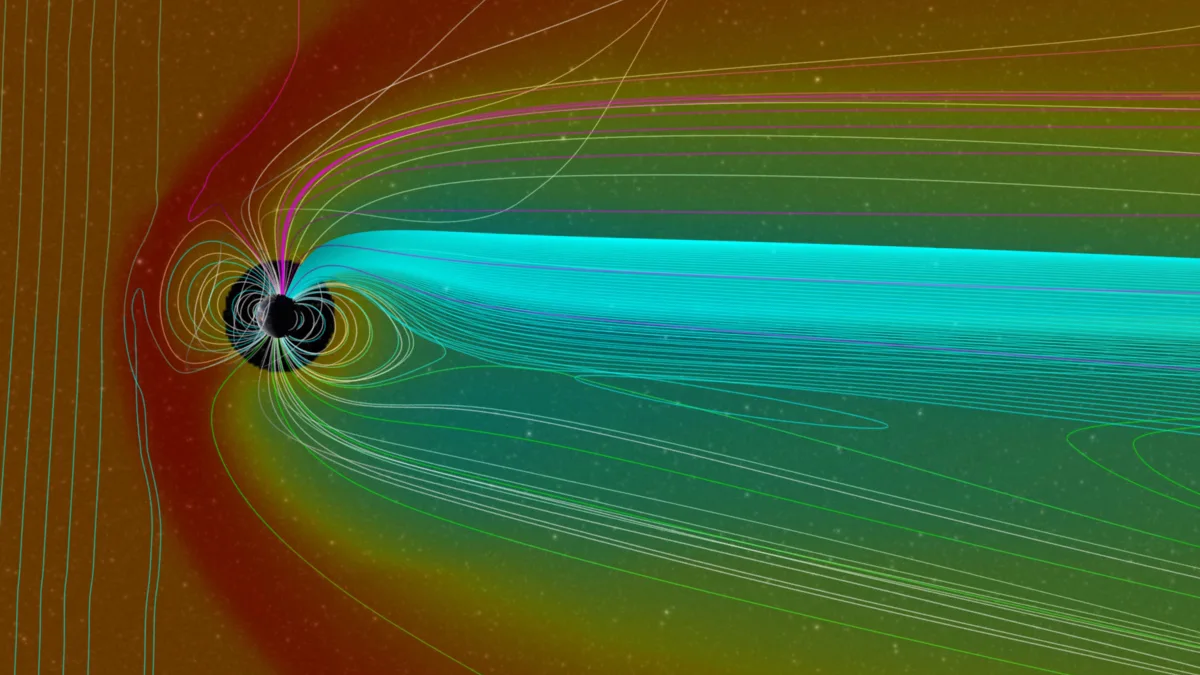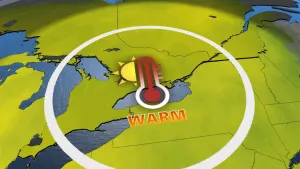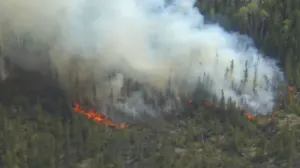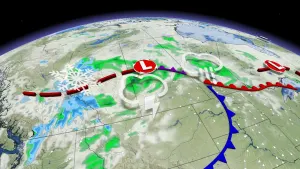
Listen to the eerie magnetic 'song' Earth sings during a solar storm
As if auroras weren't eerie enough, satellites have recorded bizarre 'sci-fi music' as solar storms passed by Earth
Solar storms can result in some spectacular and bizarre effects here at Earth. Brilliant auroras splash colours across the sky, we can experience fluctuations in our power grids, and satellites can record amazing effects in space.
In a new paper, published this week in the journal Geophysical Research Letters, a team of scientists looking through old data collected by the European Space Agency's Cluster mission, discovered something remarkable.
Earth's magnetic field emits waves in response to space weather, and these waves become far more complex and energetic when a solar storm sweeps past the planet.
Converting the magnetic data from two of these solar storms to audio, the researchers are treating us to the 'eerie sci-fi music' that Earth 'sang' during these events.
The Cluster mission's four satellites were designed to orbit through Earth's magnetic field, taking readings to show how the field reacts to the solar wind and the passage of solar storms.

This artist's rendition of the ESA's Cluster mission shows the four satellites in formation as they orbit the Earth, observing how the planet's magnetic field reacts to space weather. Credit: ESA
Combing through years of data from the mission, the researchers discovered six times when the satellites recorded a solar storm impacting on the foreshock region - the part of Earth's magnetic field that faces towards the Sun and the first region affected by a solar storm.
According to the researchers, as the constant flow of charged particles in the solar wind streams past Earth, it causes the foreshock to emit simple waves that can be likened to a low, single musical note.
When a solar storm passes by Earth, however, the impact of it hitting the magnetic field's foreshock causes that 'music' to rise in pitch and become far more complex.
"It's like the storm is changing the tuning of the foreshock," Lucile Turc, a space physicist at the University of Helsinki and lead researcher of this new paper, said in an ESA press release.

This simulation, produced by the Vlasiator computer model developed at the University of Helsinki, shows the complex waves produced between the foreshock and bow shock of Earth's magnetic field during a solar storm. Credit: Vlasiator team, University of Helsinki
As shown in the image above, as a solar storm impacts (from the right), waves produced by the foreshock propogate in a complex pattern downwards (to the left) until they hit the bow shock.
According to the ESA: "The collision of the magnetic waves modifies the behavior of the bow shock, possibly changing the way it processes the energy of the incoming solar storm. Behind the bow shock, the magnetic fields of Earth start to resonate at the frequency of the waves and this contributes to the transmission of the magnetic disturbance all the way to the ground. It is a fast process, taking around 10 minutes from the wave being generated at the foreshock to its energy reaching the ground."
Magnetic disturbances from the solar wind and solar storms manifest as a type of space weather known as a geomagnetic storm.
Geomagnetic storms often result in displays of auroras - the northern and southern lights - as solar particles become trapped along the magnetic field lines, and stream down into the upper atmosphere near the poles. While these are spectacular to behold, there can also be negative impacts from strong geomagnetic storms, such as power blackouts.
With this research adding to our knowledge of space weather, it may provide more clues that could help us avoid the worse impacts of geomagnetic storms, and possibly make better predictions of their effects.










